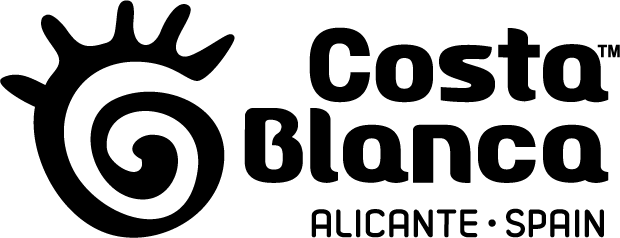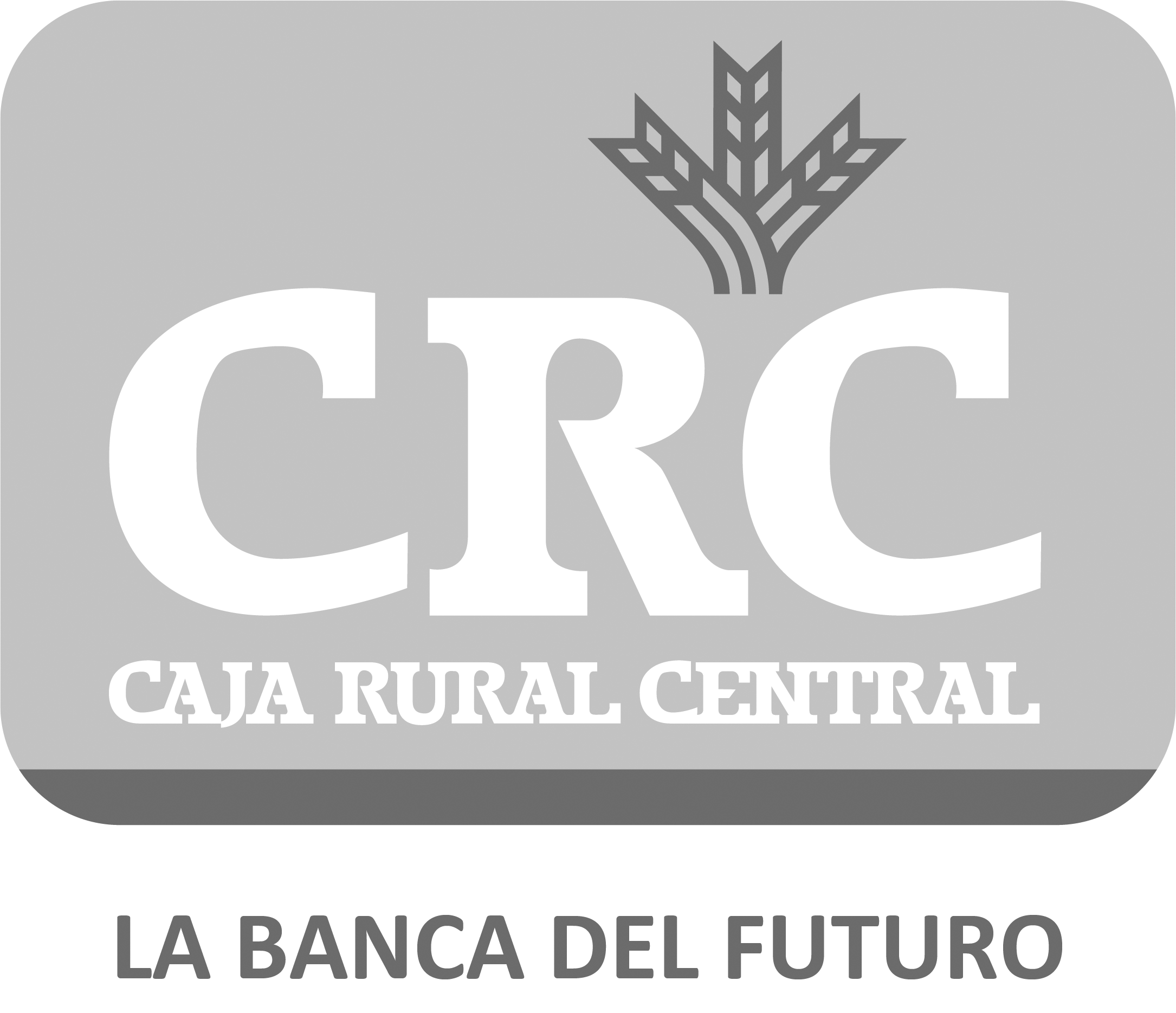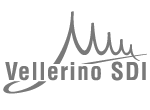Guide to the Representation
So that you can follow and enjoy the Misteri d'Elx in all its extension, we recommend that you download the representation guide.
First Act La Vespra
When the solemn Vespers of the Assumption of the Virgin, which are sungo n the sme stage of La Festa or Mystery of Elche by the clergy of the basilica of Saint Mary are finished, the first act of Elches’s sacred drama stars. It is generally known by the name of la Vespra, as opposed to the second act which is called La Festa.
At six o’clock in the afternoon an escort procession leaves from the nearby hermitage of Saint Sebastian to guide the performers to the parish church. Its is headed by the chief priest of Saint Mary’s, the Elected knights and the “Caballero” who bears the standard. The gentlemen wear tail coats and the first two carry golden sticks as a sign of their authority. Behind them come the characters of the play, followed by members of the National Trust for the Mystery of Elche, the governing body entrusted with the organization and custody of the drama of the Assumption. The short progress to the basilica is led by the Municipal Band playing an arrangement of a pasodoble from Elche, entitled The Fan.
The performance starts when the Virgin and her companions appear at the main door of the church. The Mother of Christ is represented by a young boy dressed in a white robe and blue cloak, wearing a golden halo on his head. Her little entourage is made up of Mary Salome and Mary Jacobi, who are dressed in a similar manner to the Virgin and have their names written on their respective haloes. With them are two angels of the cushions-so called because they carry red velvet cushions on their outstretched hands- and four angels in cloaks. All these characters are also played by boys, as the liturgical origin of the religious medieval theatre did not permit the participation of women.
As soon as the little singers appear through the doorway of the church, the organ plays. The Virgin Mary, called in Elche la María, and her escort remain very near the door, at the beginning of the andador, the gangway which takes the form of an inclined plane leading from the door to the stage or cadafal, built between the transepts and the sanctuary. Meanwhile, the priest and Caballleros go up the mentioned andador and occupy their places on ceremonial seats, situated at a widened part of the andador, just next to the door on to the stage. The boy who represents the Mother of God faces the main altar of the church sings to his companions, asking them for help on a day so important to her:
Germanes mies, jo voldria
fer certa petició aquest dia:
prec-vos no em vullau deixar
puix tant me mostrau amar.
My sisters, I would like
to make a plea this day:
I beg you not to leave me
as you show me so much love.
The members of Mary’s entourage answer with another chant in which they demonstrate their absolute fidelity:
Verge i Mare de Déu,
on Vós voldreu anar
vos irem a acompanyar.
Virgin and Mother of God,
wherever You want to go
we will accompany You.
The Virgin Mary moves forward a few steps and, kneeling on the two red cushions which the angels carried, expresses her wish to join her Son:
Ai, trista vida corporal!
Oh, món cruel, tan desigual!
Trista de mi! Jo que faré?
Lo meu car Fill, quan lo veuré?
Oh, unhappy bodily existence!
Oh, cruel world, so unjust!
Unhappy me! What shall I do?
When shall I see my dear Son?
Mary, always surrounded by her entourage, begins her ascent along the andador. On her way she stops on three occasions. In each of them she kneels on the two cushions and turns towards certain small sculpted reliefs on the pillars of tne nave of the church, carrying out a kind of Via Dolorosa recalling the Passion of Christ.
The first of these sacred places represents the Garden of Gethsemane, and in front of it the Virgin sings:
Oh, Sant Verger Getsemaní
on fonc pres lo Senyor aquí!
En tu finà tracte cruel
contra el Senyor d'Israel (1).
Oh, Holy Garden of Gethsemane
where Our Lord wasmade prisoner!
In you ended the cruel conspiracy
against the Lord of Israel.
(1) This chant is omitted in the dress rehearsals, although the corresponding dramatic action is retained.
A few steps further on, she stops in front of the representation of the Mount Calvary:
Oh, Arbre Sant digne d'honor,
car sobre tots ets lo millor!
En tu volgué sang escampar
Aquell qui lo món volgué salvar.
Oh, Holy Tree, Worthy of honour,
since you are the best of all!
On you He wanted to shed blood
He who wanted to save the world.
Finally, she kneels near the Holy Sepulchre and sings:
Oh, Sant Sepulcre virtuós,
en dignitat molt valerós,
puix en tu estigué i reposà
Aquell qui cel e món crea.
Oh, pure Holy Sepulchre,
most worthy of honour,
since He was inside you and rested,
Who created heaven and earth.
After these chants, the entourage continues its progress towards the cadafal. This is square in shape, covered with a thick carpet in the same colours as that of the andador, and is surrounded by a small Baroque balustrade. On this railing, twelve thick candles glow, lighting up the stage. On the left, a bed covered with white veiling can be seen. On the right there are eight seats destined for the characters of Mary’s entourage.
The Virgin kneels in the above described bed, facing the main door of the church, and the two Maries and the cushion-bearing and cloaked angels arrange themselves standing around her. From this place, the Mother of God again expresses her overwhelming desire to be in the company of her Son:
Gran desig m'ha vengut al cor
del meu car Fill ple d'amor
tan gran que no ho podria dir
on, per remei, desig morir.
Great desire has filled my heart,
for my beloved Son full o love,
so great that I cannot express it
and, for relief, I wish to die.
When Mary has finished singing this plea, the doors of heaven, which are represented in la festa in the dome fo the church, are opened. Heaven is made up of a canvas painted with clouds which completely covers the main drum of the dome. Only a square aperture, coinciding withe the centre of the cadafal, can be opened and closed by means of sliding doors, the doors of heaven. Through the gap left by these doors, a machine known as the cloud or the pomegranate begins to descend, first appearing in the form o a sphere, suspended from a stout rope. It is crimson, and its exterior is adorned with geometrical patterns and gilt decoration. From the lower end hangs a beautiful golden tail.
Once it has gone through the door of heaven, and by means of guy-ropes, the pomegranate starts opening into eight wings or segments. Its interior, which is totally covered in golden tinsel paper, reveals a boy dressed in a sky blue robe with wings on his shoulders, who represents an angel. In his hands he holds a golden palm. The opening of heaven and the emergence of the aerial machine are accompanied by organ music, pealing of bells and firework display. When the cloud has descended a few metres, this show of jubilation ends, and the angel, after dropping a handkerchief full of pieces of golden paper representing very fine golden rain, begins his singing. He greets Mary with this song, announcing to her that Christ has listened to her pleas and accedes to her wishes:
Déu vos salve Verge imperial,
Mare del Rei celestial,
jo us port saluts e salvament
del vostre Fill omnipotent.
God save you, Imperial Vigin
Mother of the celestial King,
I bring you greetings and salvation
from your omnipotent Son.
Lo vostre Fill qui tant amau
e ab gran goig lo desitjau,
Ell vos espera ab gran amor
per ensalçar-vos en honor.
Your Son, whom you love so much
and desire with great joy,
is waiting for you with great love,
to exalt you with honour.
E diu que al terç jorn, sens dubtar,
Ell ab sí us vol apel·lar
alt en lo Regne Celestial
per Regina angelical.
And He says that on the third day, without doubt,
He wants to call you to Him
high in the Celestial Kingdom
to be the Queen of the angels.
E mana'm que us la portàs
aquesta palma i us la donás,
que us la façau davant portar
quan vos porten a soterrar (2).
And He orders me to bring you
this palm, and to give it to you,
to be carried in front of you
when you are carried to your burial.
(2) In the present performances only the first verses of this chant are sung.
As soon as the pomegranate arrives at the cadafal, the members of the Virgin’s entourage hurry to approach the machine and unfasten the cords which secure the little actor during his descent. Once he is released, the angel approaches Mary’s bed and, kneeling in front of her, hands her the symbolic palm after touching it with his lips and forehead. The Mother of God, with the same ceremony, takes this special gift and expresses a new wish to the messenger of Christ, that the apostles be present at the moment of her death:
Angel plaent e lluminós,
si gracia trob jo davant vós,
un do vos vull demanar,
prec-vos no me'l vullau negar.
Welcome and shining angel,
if I find favour with you,
I would like to ask you a boon,
I beg you, do not deny it to me.
Ab mon ser, si possible és,
ans de la mia fi jo veés,
los Apòstols ací justar
per lo meu cos assoterrar (3).
If its is possible for me,
to see before my end
the apostles gathered here
to bury my body.
(3) This chant is omitted in dress rehearsals, but the dramatic action is retained.
After hearing this appeal, the angel gets into the pomegranate again where, secured with a strong leather belt to avoid accidents, begins to ascend to heaven, while reassuring the Virgin that her wishes will be fulfilled:
Los Apostols ací seran
i tots ab brevetat vindran,
car Déu qui és omnipotent
los portarà sobtosament.
The apostles will be here.
All of them will shortly come,
since God who is omnipotent
will suddenly bring them.
I, puix, Verge ho demanau,
lo etern Déu diu que li plau
que sien ací sens dilació
per vostra consolació. (4)
And since, Virgin, you ask it,
the eternal God says that He will be pleased
that they be here without delay
for your consolation.
(4) In present performances, only the first verses of this chant are sung.
When the pomegranate arrives to the doors of heaven, these are opened withe the same signs of jubilation as on the first occasion. Once the wings of the colud are closed, it starts to disappear through the doors again.
When the pomegranate is a few metres from heaven, on the cadafal the angels of the Virgin’s entourage, as well as Mary Salome and Mary Jacobi, greet the Mother of Christ, genuflecting in fron of her and then passing to the prepared seats on the opposite side of the stage. The two “Caballeros Electos” also get up from their seats of honour, and exit through the andador to the street. This action, which nowadays is merely symbolic, reminds us of the age in whcich they organized La Festa on behalf of the city council. Then they were guided by the priest of the church, who acted as master of ceremonies, to leave in search of the different actors who, waiting in the nearby hermitage os Saint Sebastian, needed to be brought on stage at the proper time. The Caballeros, therefore, really had the function of theatrical callboys.
A few moments after heaven has been closed behind the pomegranate, the Caballeros return to their seats, in that way pretending that they have gone to the chapel of Saint Sebastian to indicate to the actor who plays the part of the apostle Saint John that it is time for his entrance. Then the apostle appears at the end of the gangway. He is dressed in a white robe and green cloak. In his left hand he holds an old parchment book, symbolizing his own Gospel. As he moves up the central gangway, his face shows surprise at hte incomprehensible force which is driving him in this direction. Towards the middle of the andador, when he sees the Virgin Mary kneeling on her bed, Saint John walks more quickly and greets his Mother kissing both her hands. His singing shows pleasure in the face of such an unexpected encounter:
Saluts, honor e salvament
sia a Vós, Mare excel.lent
e lo Senyor, qui és del tro,
vos done consolació.
Greetings, honour and salvation
be with you, excellent Mother
and may the Lord of thunder,
grant You consolation.
Mary tells the most beloved disciple of Jesus all that the angel of the pomegranate has told her about the proximity of her death. Furthermore, when she has finished her chant, she gives him the golden palm which was brought down from heaven:
Ai fill Joan e amic meu
conforte-us lo ver Fill de Déu
car lo meu cor és molt plaent
del vostre bon adveniment (5).
Oh John, my son and friend
may the rue Son of God comfort you
since my heart is full of joy
by your happy arrival.
Ai fill Joan, si a vós plau,
aquesta palma vós prengau
e la'm façau davant portar
quan me porten a soterrar.
Oh son John, please,
take this palm
and have it borne in front of me
when I am carried to my burial.
(5) This chant is omitted in the dress rehearsals.
Saint John receives the present from Mary. On this occasion, as was the case in the presence of the angel, the handing over of the palm involves a rite of eastern influence, in which it is kissed and touched with the forehead. Then the favourite disciple sings, as one los in thought, a wistful and emotional chant:
Ai, trista vida corporal!
Oh, món cruel, tan desigual!
Oh, trist de mi! on iré?
Oh, llas, mesquí! Jo que faré?
Oh, unhappy bodily existence!
Oh, cruel world, so unjust!
Oh, unhappy me! Where shall I go?
Oh, wretched snare! What shall I do?
Approaching Mary again, he exclaims:
Oh, Verge Reina imperial!
Mare del Rei celestial!
Com nos deixau ab gran dolor,
sens ningun cap ne regidor?
Oh, Virgin, Imperial Queen!
Mother of the celestial King!
Why do you leave us in great sorrow,
without any head or leader?
Immediately afterwards, Saint John moves to the entrance of the stage and, looking towards the main door of the church, calls his fellow apostles:
Oh, Apòstols e germans meus!
Veniu, plorem ab tristes veus,
car hui perdem tot nostre bé,
lo clar govern de nostra fe.
Oh, apostles and my brethren!
Come, weep with sad voices,
since today we lose all our favour,
the pure guidance of our faith.
Saint John returns to sing to Mary, expressing his sadness and confusion once again:
Sens Vós, Senyora, que farem?
E ab qui ens aconsolarem?
D'ulls e de cor devem plorar
mentres viurem e sospirar.
Without You, Lady, what shall we do?
And with whom shall we comfort ourselves?
We must weep with our eyes and hearts,
for as long as we live, and sigh.
While Saint John is directing the preceding chant to Mary, the apostle Saint Peter stars going up the andador. He wears a grey robe and his shoulders are covered with a crimson cloak. He holds symbolically in his hands a bunch of golden keys, recalling those of the doors of heaven which Christ gave to him. It should be pointed out that this character has to be played by a priest, given his sacred role, as is the case with two others who will be pointed out later.
Saint Peter, showing the same gestures of surprise as Saint John, moves along the gangway little by little. On arriving in front of the bed of the Virgin, he greets her, kissing her hands, and then embraces Saint John. Saint Peter sings his address to Mary in a deep voice:
Verge humil, flor d'honor,
Mare del nostre Redemptor.
Saluts, honor e salvament
vos done Déu omnipotent.
Humble Virgin, folwer of honour,
Mother of our Redeemer.
Greetings, honour and salvation
may the omnipotent God give you.
At the same time that the notes of this chant resound, six more apostles go up the andador, simulating surprise. The apostles move closer to the cadafal and, after arriving on it, they approach the bed of the Virgin and greet her, kissing her hands and genuflecting in front of her. They also greet Saint Peter and Saint John with embraces of friendship. It should be pointed out that one of these six apostles is the Chapel Master, or musical director of the Mystery who, because he is also cast as an apostle, will be able to conduct the choir’s canticles in a discreet way and without the public noticing his presence.
Simultaneously, on the andador, another scene of La Festa begins, the one known as the Ternari. At the beginning of the sloping gangway three apostles meet. Each of them enters through one of the rear doors of the church, i.e. the main door, the door of San Agatángelo and the door of the Resurrection (erroneously called Saint John’s door). One of these apostles is Saint James, who is dressed as a pilgrim, in a robe, a cloak decorated with shells, wearing his hat on his back, and carrying a stick surmounted by a gourd for water. This simultaneous entrance through different doorways symbolizes the meeting of the disciples at crossroads. The apostles greet each other and, astonished at being gathered together, they sing:
Oh, poder de l' Alt Imperi,
Senyor de tots los creats!
Cert és aquest gran misteri
ser ací tots ajustats.
Oh, power from the empire on high,
Lord of everything created!
Certainly this is a great mystery
to be here all gathered together.
De les parts d'ací estranyes
som venguts molt prestament,
passant viles i muntanyes
en menys temps d'un moment.
From foreign parts here
we have very quickly come,
crossing cities and mountains
in less than a moment of time.
They advance a few steps and then sing again:
Ab gran goig, sens improperi,
som ací en breu portats.
Cert és aquest gran misteri
ser ací tots ajustats.
With great joy, without harm,
we are swiftly transported here.
Certainly this is a great mystery
to be here all gathered together.
De les parts d'ací estranyes
som venguts molt prestament,
passant viles i muntanyes
en menys temps d'un moment.
From foreign parts here
we have very quickly come,
crossing cities and mountains
in less than a moment of time.
Once this chant is finished, the three apostles head for the cadafal. They arrive on it and, like the disciples who preceded them; they greet Mary, Saint Peter and Saint John. In this way the apostles gather, just as the angel of the cloud said they would, around the bed of the Virgin. There is only one exception, Saint Thomas, who will not appear until the end of the second act. The apostles sing all together a unique chant which is written both in Valencian and Latin. It constitutes a Salve dedicated to the Virgin, and the apostles begin it, kneeling. After the first verse, they stand up and, from that moment, they begin to bow in turn, by groups of voices-tenors, then baritones and then bases- as the chant is developed:
Salve Regina, princesa,
Mater Regis angelorum,
advocata peccatorum,
consolatrix afflictorum.
Hail Queen, Princess,
Mother of the King of angels,
advocate of sinners,
consoler of the afflicted.
L'omnipotent Déu, Fill vostre,
per nostra consolació,
fa la tal congregació,
en lo sant conspecte vostre.
The omnipotent God, your Son,
for our consolation,
such gathering,
in your holy presence.
Vós, molt pura e defesa,
reatus patrum nostrorum,
advocata peccatorum,
consolatrix afflictorum.
You, most pure and protected,
from the sin of our parents,
advocate of sinners,
consoler of the afflicted.
During the last verse of the Salve, all the apostles, except for Saint John, fall on their knees. Saint John, holding the golden palm, is the only character who stands up all the time throughout the play. After a few moments, Saint Peter gets up and, addressing the Virgin Mary, he sings:
Oh, Déu, valeu! E que és açò
d'aquesta congregació?
Algun misteri amagat
vol Déu nos sia revelat.
Oh God, help me. What is the meaning
of this gathering?
A hidden mystery
God wants to be revealed to us.
Saint Peter kneels again; Mary Salome, Mary Jacobi and the angels of the Virgins entourage leave their seats and place themselves at the head of the Virgin’s bed. The boy who plays the part of the Virgin Mary takes a thick lighted candle in his hands. This is the prelude to her death. With a flattering and sad voice she entrusts her sons to bury her body in the Valley of Jehoshaphat:
Los meus cars fills, puix sou venguts
i lo Senyor vos haja duts,
mon cos vos sia acomanat
lo soterreu en Josafat.
My dear sons, since you have come
and the Lord has brought you,
may my body be entrusted to you
and be buried in Jehoshaphat.
After the last notes of the chant, la María drops as if dead on the bed. The apostles and the Marías approach to help her.
In fact, all the characters on the stage, while simulating to attempt to assist the Virgin, try to position in order to hide from the public view an interesting mechanical part of the sacred drama which takes place at this moment. After collapsing, the actor who represented the Mother of Christ is made to disappear into the interior of the cadafal through a trap-door under the bed. Then a little platform with the image of the Virgin of the Assumption, patroness of Elche, lying in state, is made to rise to he surface of the bed. In that way the image of Mary venerated in the basilica of Elche is brought on to the stage. Her face is covered with a mask, on which the eyes are closed in order to give a faithful representation of her death.
In front of the body of the Mother of God lying on the bed, the apostles, who hold lighted candles in their hands, sing a beautiful funeral chant in which they express hope of her future resurrection:
Oh, cos sant glorificat
de la Verge santa i pura,
hui seràs tu sepultat
i reinaràs en l'altura.
Oh, holy and glorified body
of the sanctified and pure Virgin,
today you will be buried
and will reign on high.
When this deeply moving chant of the apostles is over, the doors of heaven open again and the descent of an aerial machine called the araceli or recélica begins. This is a machine with the configuration of the reredos of an altar, built of iron, wrapped in golden foil. It is made up of four ledges symmetrically placed around a central niche. On the upper ledges there are two kneeling men-angels who play the guitar and the harp respectively. On the lower ledges there are two boy-angels, each with a small guitar. The central niche is assigned to the so-called Principal Angel, who appears standing up and wearing a priestly alb and stole. This character has to be played by a priest. As soon as the recélica has come through the doors of heaven, a rain of golden tinsel paper falls on the stage. The angelical chori stars its singing, telling Mary of her coming Assumption:
Esposa e Mare de Déu
a nós, àngels, seguireu.
Seureu en cadira real
en lo regne celestial.
Wife and Mother of God
you will follow us, angels.
will sit on a royal chair
in the celestial kingdom.
Car, puix en Vós reposa
Aquell qui cel e món crea,
deveu haver exalçament
e corona molt excel·lent.
Since in you rested
The one who created heaven and earth,
you should have exaltations
and a most excellent crown.
Apòstols e amics de Déu,
aquest cos sagrat pendreu
e portau-lo a Josafat
on vol sia sepultat (6).
Apostles and friends of God,
take this holy body
and carry it to Jenoshaphat
where it will be buried.
(6) In present performances only the first quatrain of this previous chant is performed.
When the Araceli arrives at the cadafal, without a stop to the singing it goes through the stage by a great central trap-door which has been opened secretly by the hands inside the stage. Its stay inside the stage, however, will be very brief: the time necessary for the Principal Angel to collect a small image of the Virgin dressed in white veiling. This tiny carved model represents the soul of Mary. With this, the separation of the soul from the body, the actual death of the Mother of Christ, is symbolized visually. On its ascent, the angels sing the same verses which they sang on their descent. And with the arrival of the Araceli in heaven the first act of the Mystery finishes. (This descent of the Araceli is omitted in the dress rehearsals in order not to make them too long.
The only remaining action is that now the priest of Saint Mary, the Caballero who bears the standard and the other Caballeros Electos, enter the cadafal to kiss the feet of the image of the dead Virgin. The Maries, angels of the entourage and the apostles follow suit. Last will be Saint John who, in addition, leaves the golden palm o top of the image of the Virgin, across her bosom. Afterwards the actors leave for the hermitage of Saint Sebastian, where they take off their costumes until the following day.






















